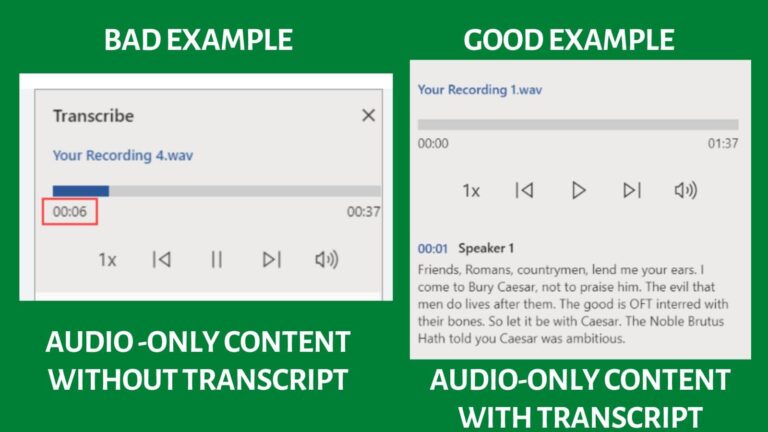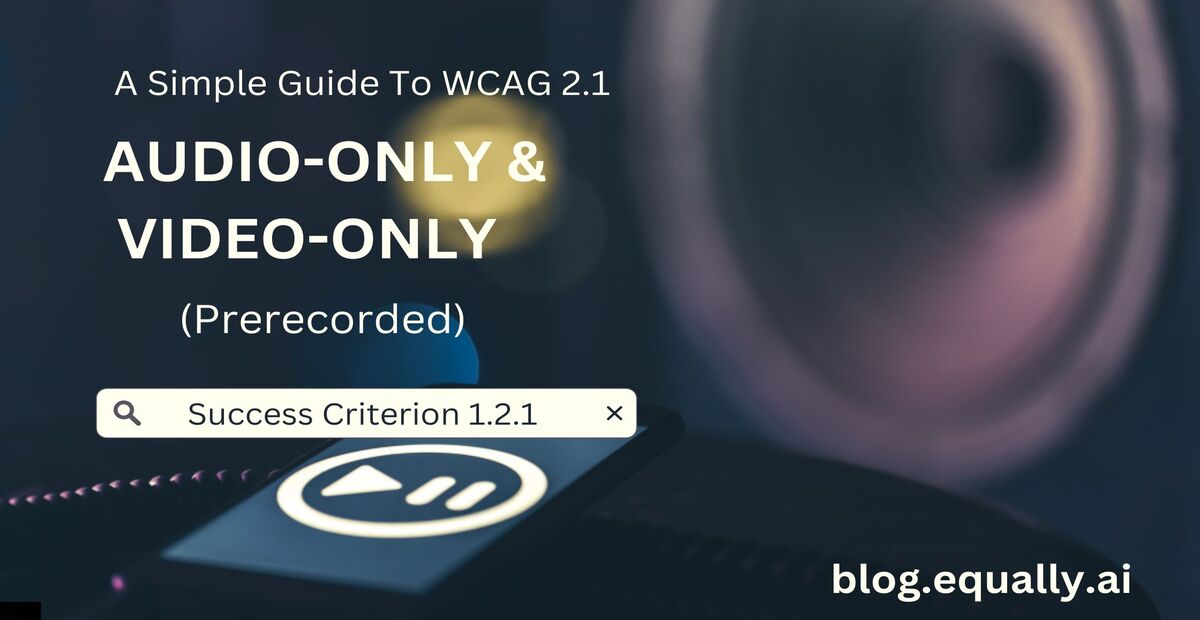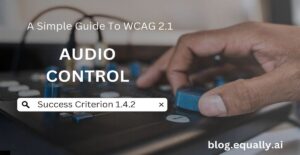WCAG Principle: Perceivable
Guideline 1.2: Time-based Media (Provide alternatives for time-based media)
Conformance Level: A (Minimal Requirement)
What is Success Criterion 1.2.1?
Provide an alternative to video-only and audio-only content.
In order to meet this success criterion, audio-only & video-only content must provide alternative ways of conveying information. Audio content must have transcripts and videos should have either a transcript or an audio track alternative.
How does it make your website accessible?
Users who have difficulty with hearing and/or vision may need assistance with audio-only or video-only content, such as an audio file, embedded podcast, silent videos or animations.
By providing the same information conveyed in the audio-only or video-only content in a different format, users can access the content by other means, such as text transcripts or assistive technology.
Who benefits?
- People with visual impairments
- People with cognitive or learning disabilities who may have difficulty understanding the meaning of prerecorded video content.
- People with auditory impairments.
- People with both visual and auditory impairments.
- All users who may need to repurpose content in a variety of ways.
How to Meet Success Criterion 1.2.1
Common mistakes with audio- and video-only content
- Content that communicates information only through audio does not have a transcript;
- Spoken dialogue and sound effects are not included in the text transcript of audio-only content;
- Audio-only transcripts are not clearly labelled.
How to fix:
- Provide text transcripts with equivalent information for any audio-only media;
- Transcribe video to text or record an audio track equivalent
- Put the transcript, or a link to it, and the audio track next to the video-only media.
Helpful tips for developers:
- Make sure your transcript is free of spelling and grammar errors so that it is easy to read.
- When multiple speakers are present, use speaker labels to identify who is speaking.
- Transcripts must include non-speech sounds. [Square brackets] are usually used to indicate these.
- Text should be written verbatim if possible. Avoid filler words, such as “um” or “like”, unless they are intentionally included.
- Transcripts of audio-only and video-only content must convey the same information as the media.
How to test if you’ve met compliance
- Refer to the alternative while watching/listening to the video-only/audio-only content.
- Check that the dialogue in the transcript matches the dialogue and information presented in the media presentation.
- If an audio-only content includes multiple voices, check that the transcript identifies who is speaking for all dialogue.
- If the video includes multiple people or characters, check that the transcript identifies which person or character is associated with each action described.
- Ensure that the transcript itself or a reference to it can be programmatically determined from the text alternative for the audio-only content
- If the alternate version(s) are on a separate page, check for the availability of link(s) to allow the user to get to the other versions.
- If your checks pass steps 2 – 5, then you’ve passed this success criterion.
Bad and Good Examples

Frequently Asked Questions
What is time-based media according to WCAG?
Time-based media according to WCAG is anything embedded on a website that moves, makes noise, displays content synchronized with another element of the site, or changes content without user input. These include videos, films, slides, and audio files.
What is alternative for time-based media?
An alternative for time-based media is a textual description that includes all the significant events and persons in the video or audio content.
Is film/animation a time-based media?
Yes. Films and animations are time-based media because they have a duration as a dimension and unfold to the viewer over time.
What media type does not need to meet success criterion 1.2.1 audio-only and video-only (prerecorded)?
A media type that does not need to meet success criteria 1.2.1 audio-only and video-only (prerecorded) is audio that serves as an alternative for video-only content. For example, there is no need to provide captions for an audio description of a silent film.




